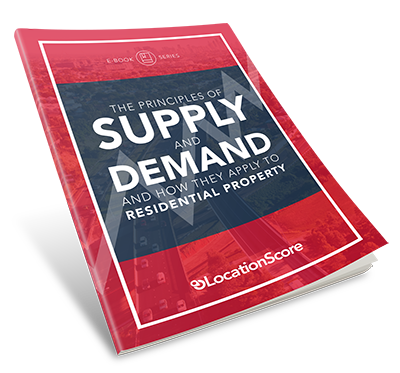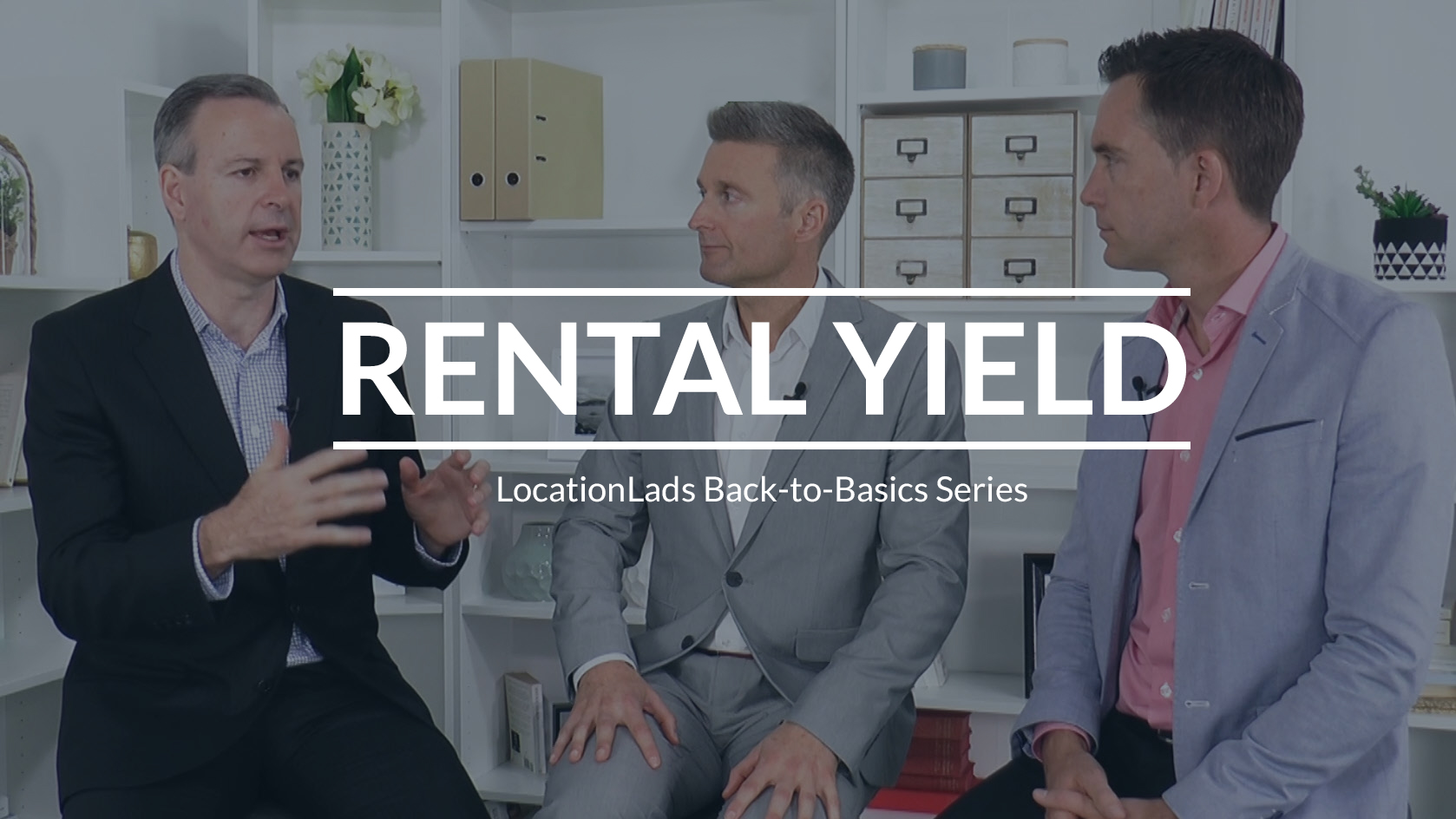×

The Principles of Supply and Demand and How They Apply to Residential Property
We Only Send You Awesome Stuff

LocationScore
|
June 6, 2017
Bryce: So the Location Score lads here to talk about all things yield and gents, it's a really important measure for property investors, but we want to see how much this has an impact on capital growth. How do you see that?
Jeremy: Well I see a high yield market as being potentially a pre-cursor to capital growth. Similar to vacancy rates, it's a case of tenants more agile than owner occupiers. Because a lease is easier to get than a mortgage. So you can find that a particular location goes through some kind of change, and the first people to capitalise on it are the tenants and that places pressure on vacancy rates and on rents, so the yield starts to go up. Eventually the owner-occupiers get their mortgage together and they buy into the location, and that places pressure on prices to go up. And of course, investors are attracted to the yield so they jump in as well, and yield can be a great indicator of future capital growth.
Ben: Yes that's true, what we're basically saying is that there are investors out there who just focus solely on the yield, and this is what we were talking about with regards to, how there is a little risk in that. If it was just investors running into that market. So just looking at this in isolation, without actually looking at the percentages of renters vs owner occupiers, you can get yourself into a little bit of trouble because, if everyone's flying to chase that yield alone, you're going to get caught out. So it's really important to understand, we're trying to measure yield a measure of future demand or demand coming into that market. So as Jeremy was saying, when you're looking at owner occupiers, you're basically saying, "yeah I like the area, the infrastructure and amenities are lifting" and they're sort of ready to bed down and buy into that area. And Investors are also saying, that the yields a pretty good because vacancy rates are low and the yield is up. And all of a sudden you've got a combination of the two coming into the market.
Bryce: Ultimately, like you said Ben, sometimes if you use an example of the mining town, the yields are really high early on and not sustainable. So you want that sustainability of the yield, not just a short term versus well to get you some confidence in the performance of the asset.
Ben: So what type of yield are we looking for Jeremy in terms of good numbers versus not so great numbers?
Jeremy: Well there seems to be a correlation between high yields and dare I say it, risky locations. So for me, it would be finding the lowest yield in a market that has the most appeal that I can afford. So I'm not prioritising yield, I'm prioritising capital growth because that's what makes the difference.
Ben: Yes, that's what you're in the game for, capital growth...
Jeremy: Yes if you look at a property that has exceptional yield in traditionally normal interest rate markets, that would be quite an exceptionally high yield, and it might only deliver an extra 1% of the value of the property. If you pick a top growth location and you're talking double digits, and that's where the serious wealth is created. So yes, for me it's all about finding yield that's suitable for my serviceability limitations and then the best capital growth market. So at the moment, yields in city markets like Sydney and Melbourne would be under 4%, typically you've got a countrywide yields of around 4.5%. So whatever suits the investors cash flow is probably the primary concern, and then you're looking for the maximum capital growth potential for those markets.
Bryce: Yeah but in terms of being able to measure it, you know the rent that you're getting, the price that you're paying is a snapshot in time. It's actually easy to measure but as you point out, there's...
Jeremy: Yes, that's right, when you start talking median yield, so you're talking about an individual property, you've got a statement, you've got a price, so bang you know the precise yield for that property. When you're targeting locations to suit your yield, you're looking at median yields, and they are the most anomalous statistic in property investing.
Bryce: Because there's no median property and there's no median house because it's a fictitious paper thing.
Jeremy: Yes you might have in month one, you've got a whole bunch of one bedroom units selling. And in the same month, you've got a whole bunch of two bedroom units renting. SO you might have $500pw rent, $300,000 property and it's a fantastic yield. But it's two completely different properties. You can't get that sort of rent for that property, and you can't get that sort of price for the rental property.
Bryce: So are you saying there's some kind of science behind this.
Ben: So obviously the answer to this is you're looking at the trend. Because it can be a bit choppy from the scoring...
Jeremy: Month by month yes...
Ben: Yes month by month it can really chop up. So you've basically got to say then, where's your trend over that 3 or 6 months?
Jeremy: I like to use the term line of best fit rather than trend. Vacancy rates are another great indicator and they're also quite volatile. But your combined yield, vacancy rates and you look at the line of best fit using an historical chart over the last 6 months, and you get a much better idea as to what is the real yield.
Ben: One last thing that I want to talk about is, there's this chase towards the super high yields, people who are looking to actually get cash flow positive property. What does the data suggest generally around the performances of the capital growth for those cash flow positive properties?
Jeremy: Yes it's highly volatile so you have your classic mining town and you can get some tremendous yield and capital growth, but you need to have your finger on the pulse of that market
Ben: So that's an in exit market isn't it? You don't stay there long term
Jeremy: no it's not a set and forget. All the set and forget markets will have normal yields. And I say normal because it makes no sense to have a large number of properties that are more expensive to rent than to own. Why would you be in a market like that? The reason is because those tenants are only there short term and they don't want to live there. They just have to be there.
Bryce: So there you have it folks, whilst yield sounds quite easy to measure, it's actually quite difficult in practise. But it's very, very important for you as an investor to get the yield equation right as a measure of capital growth.
Note: This is just a brief explanation on Rental Yield. If you are interested to learn how you can apply this in your own research, our upcoming webinar will unpack this in more details. Learn more about our webinar here.
Most Popular Blog Posts